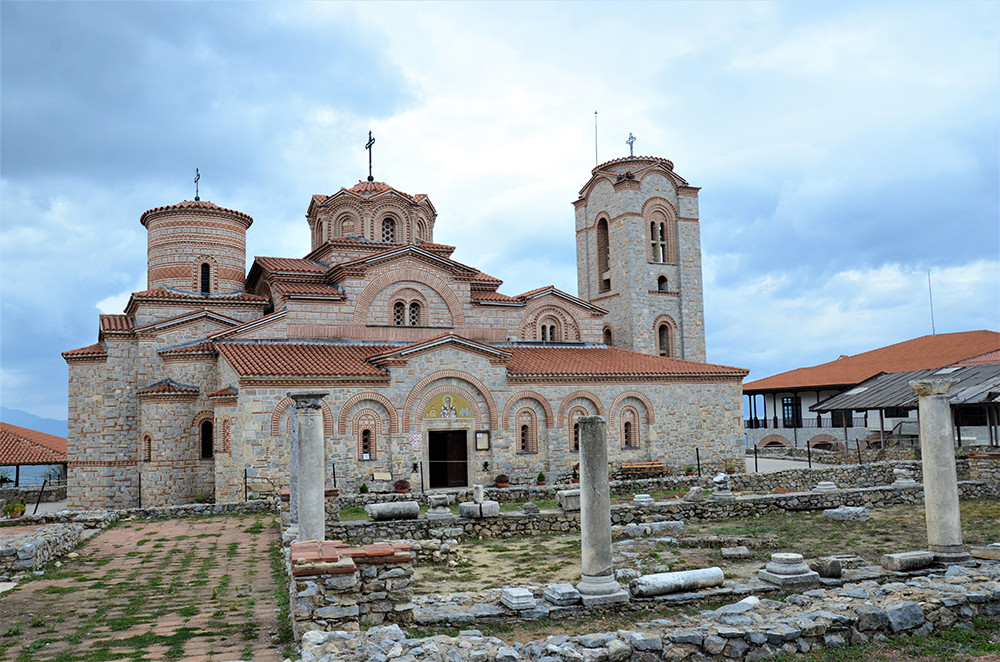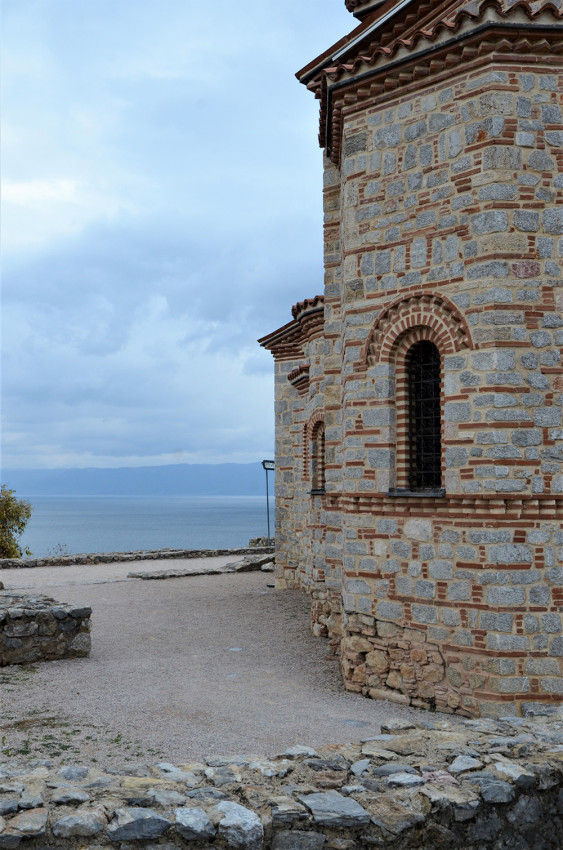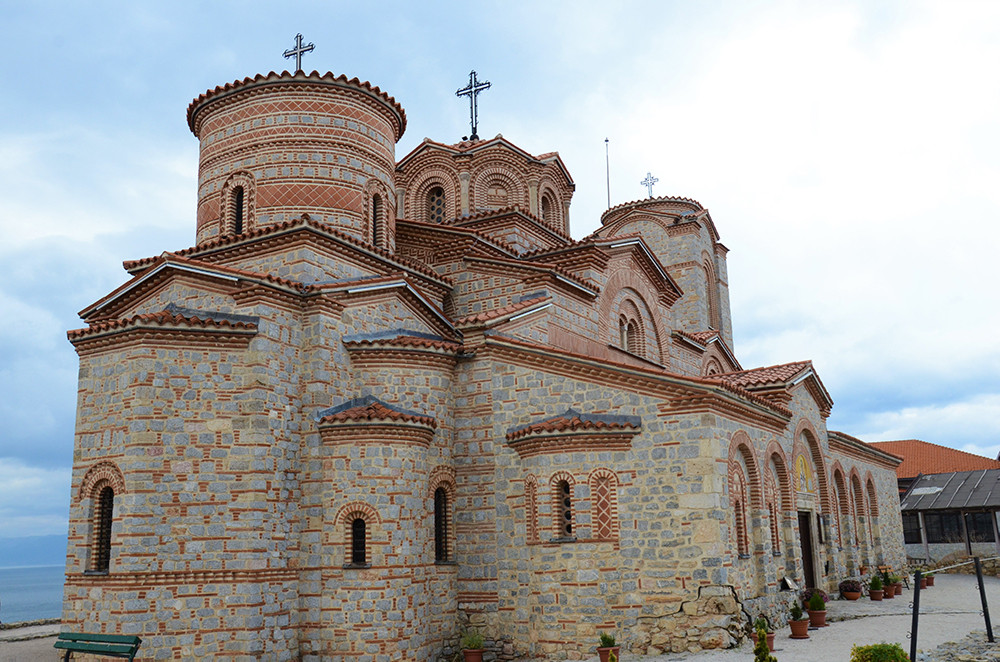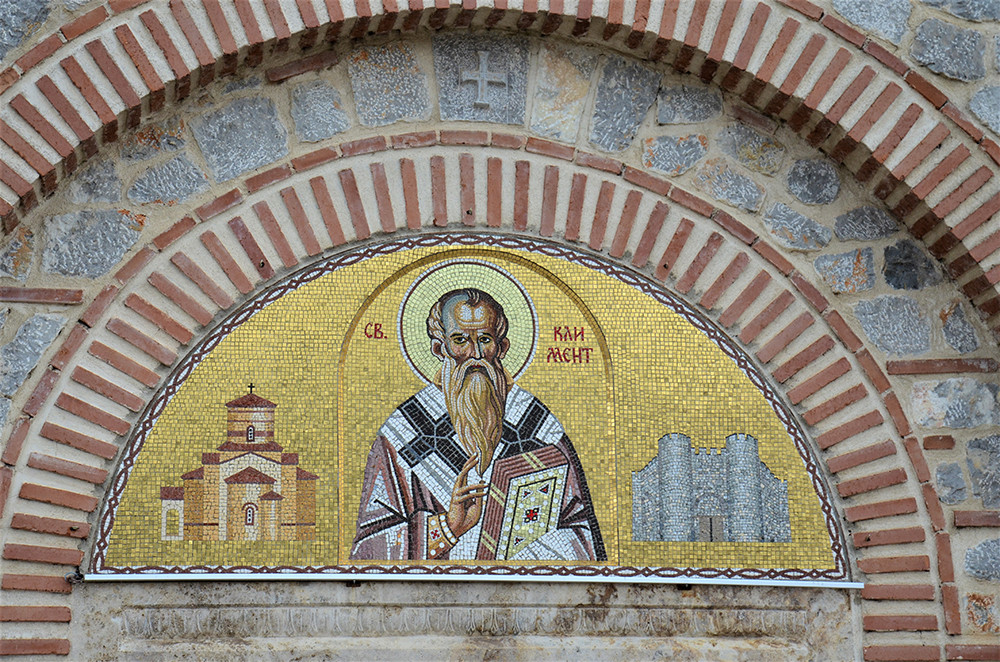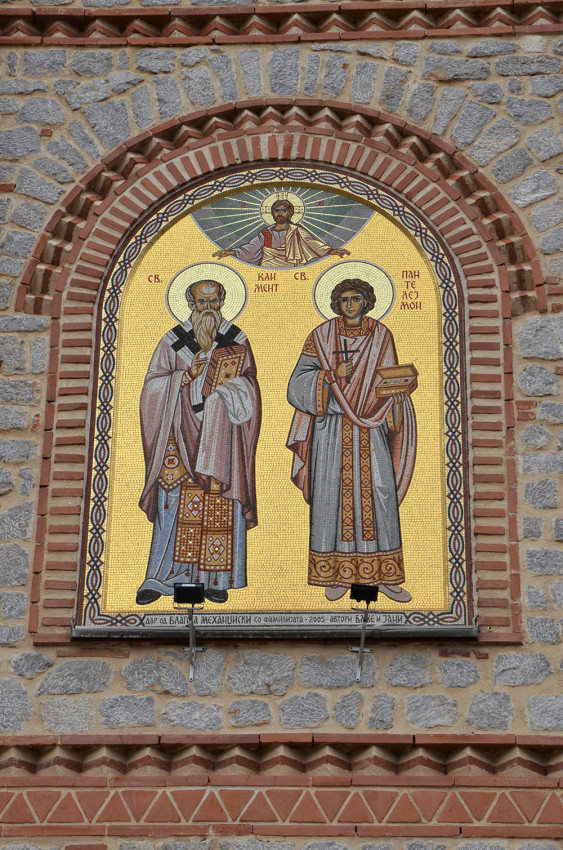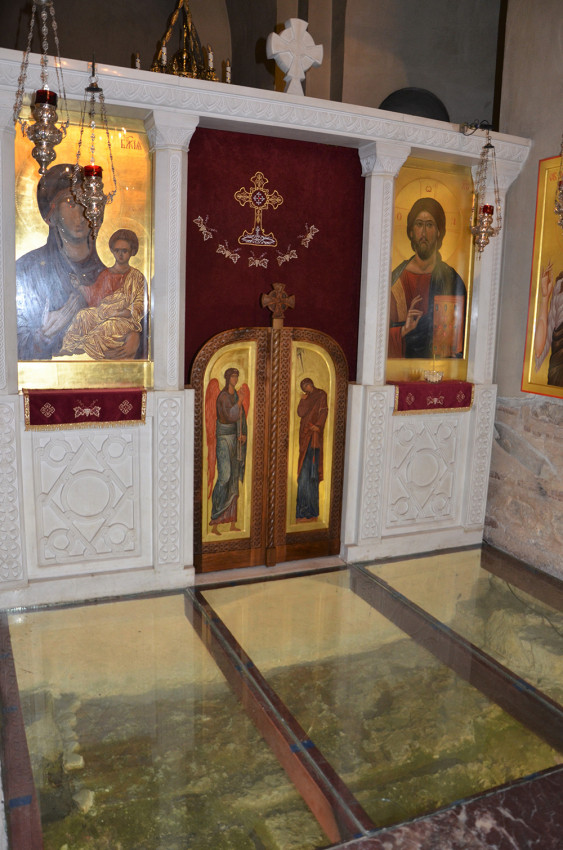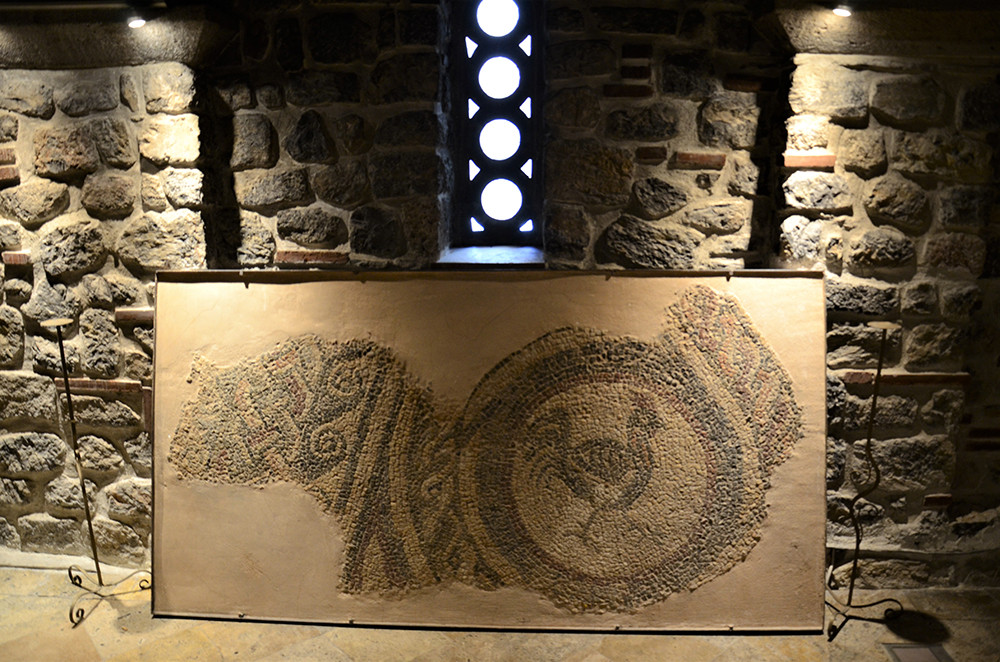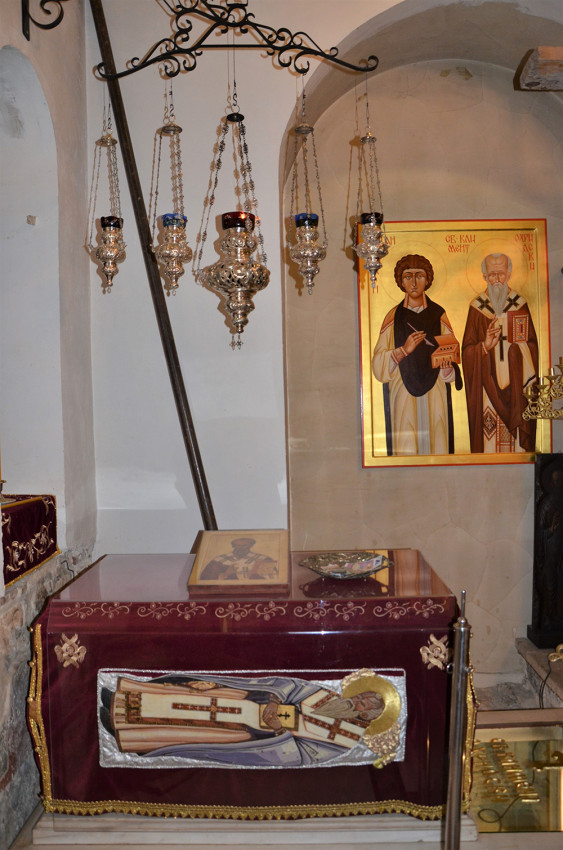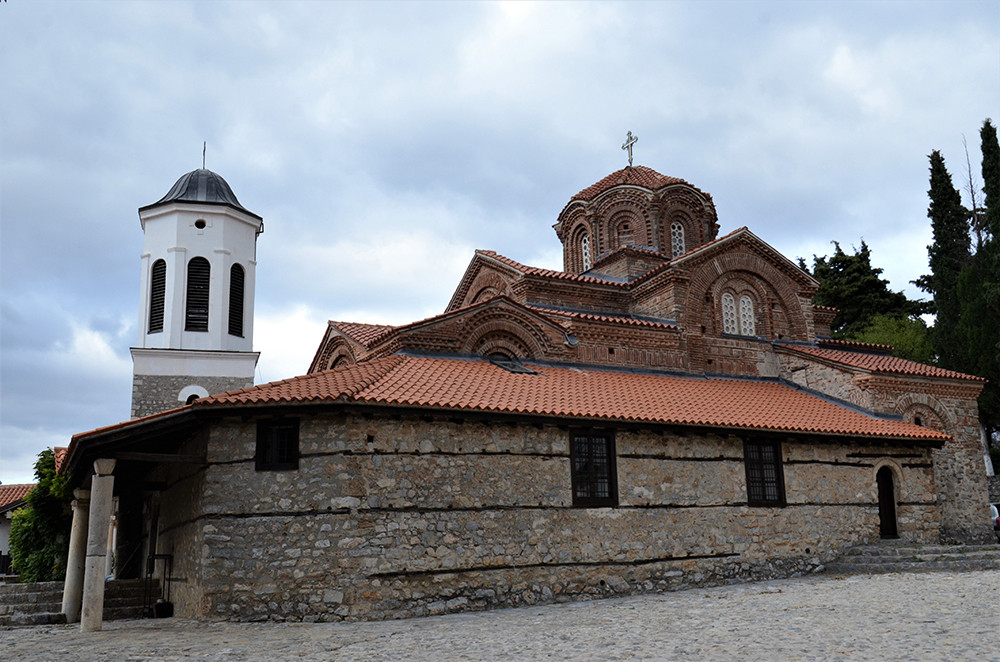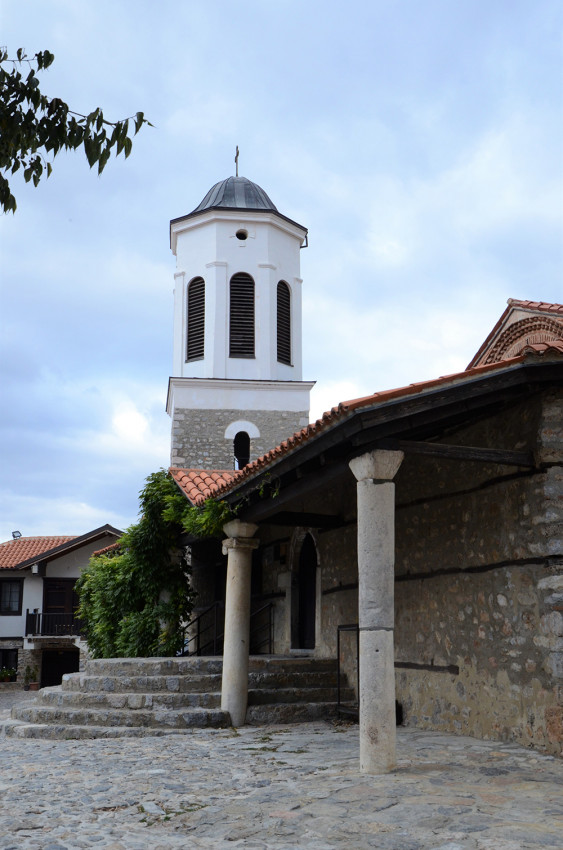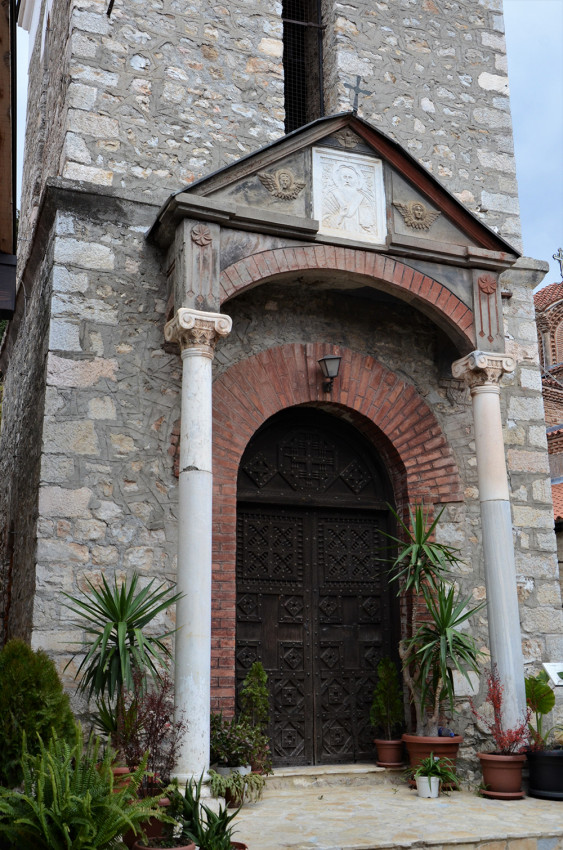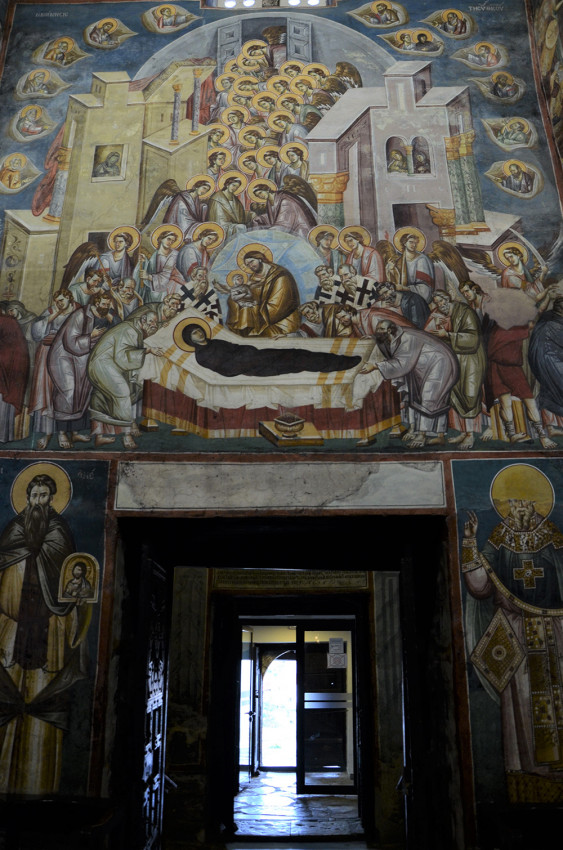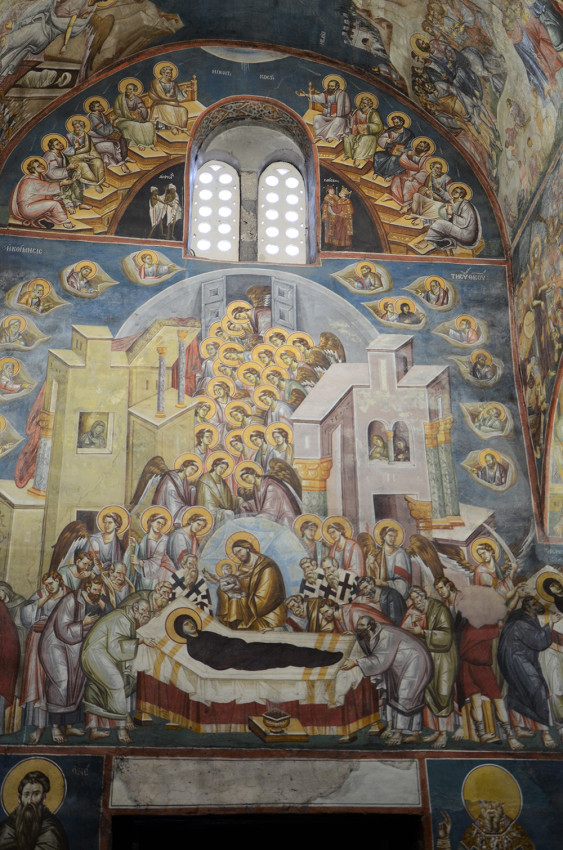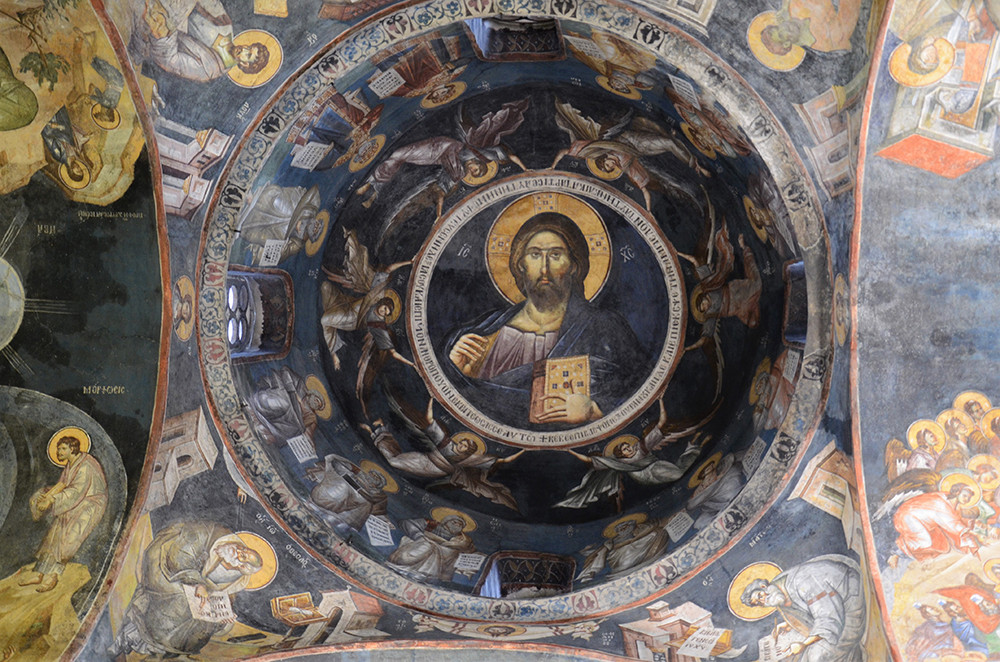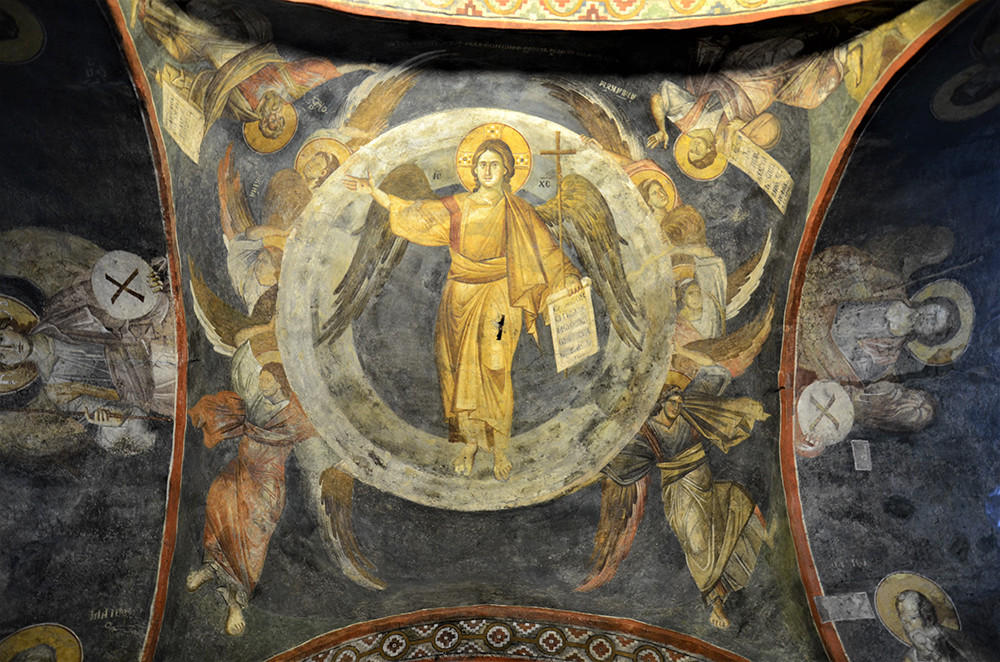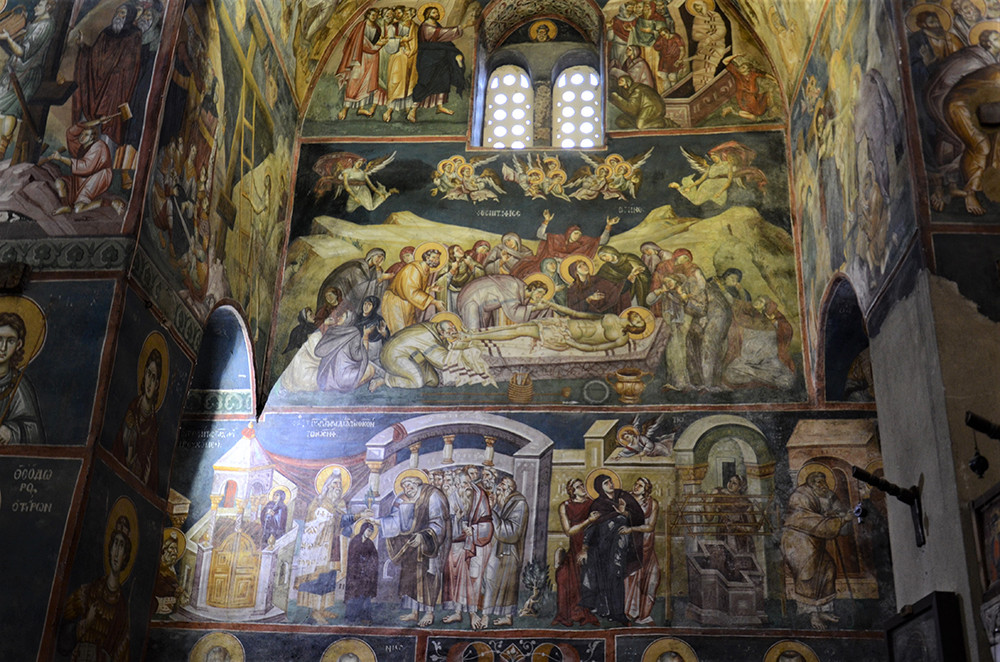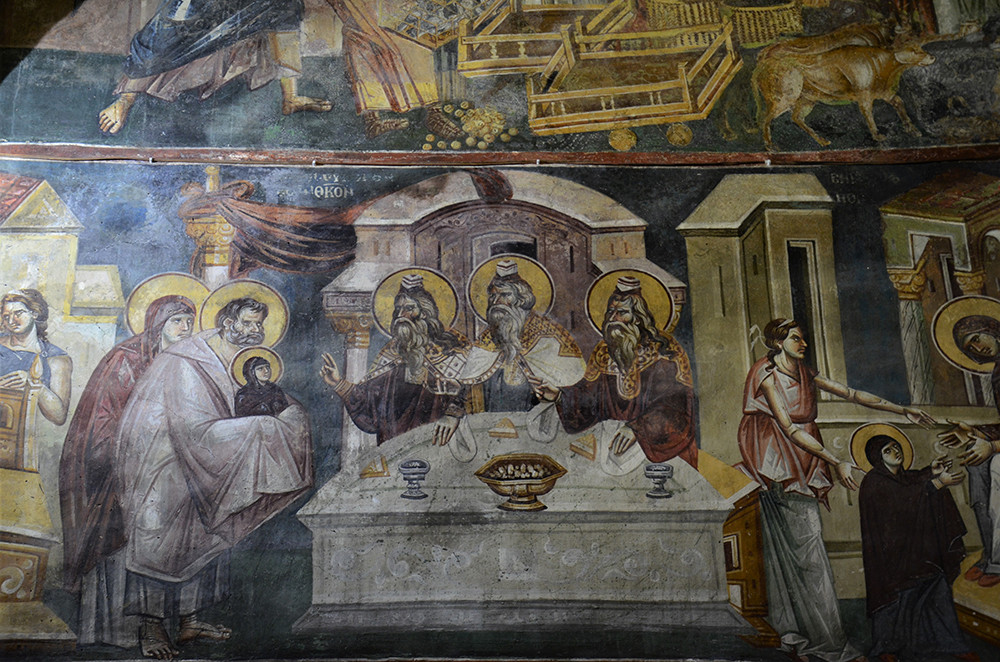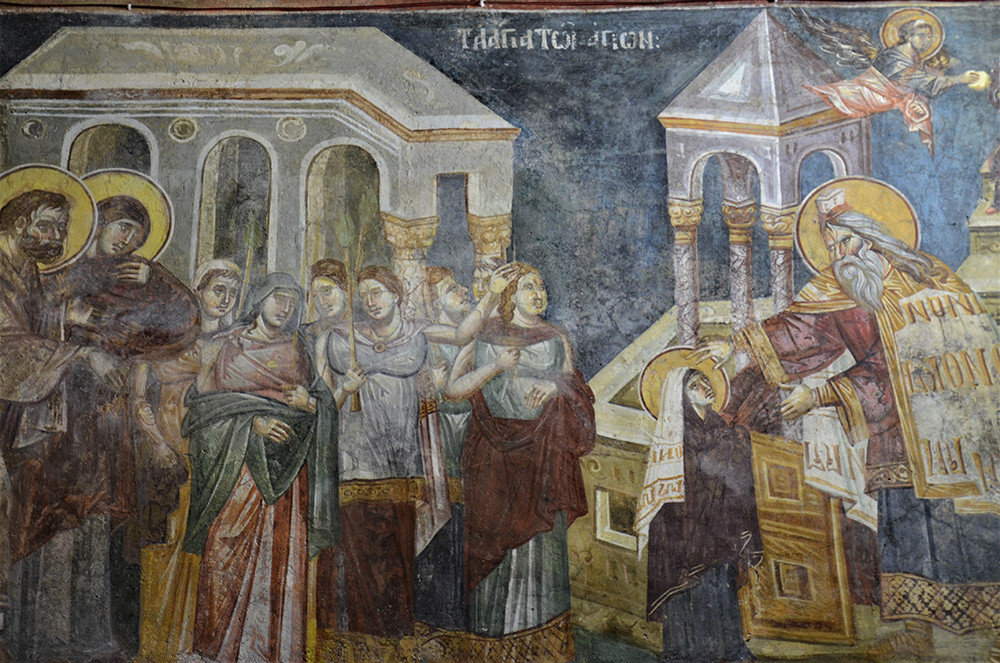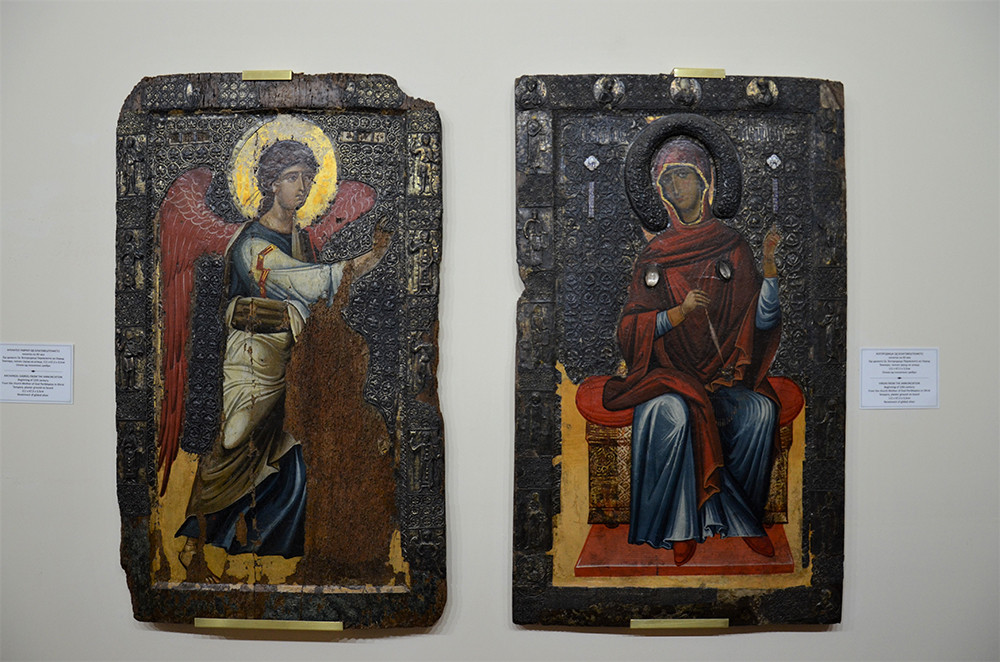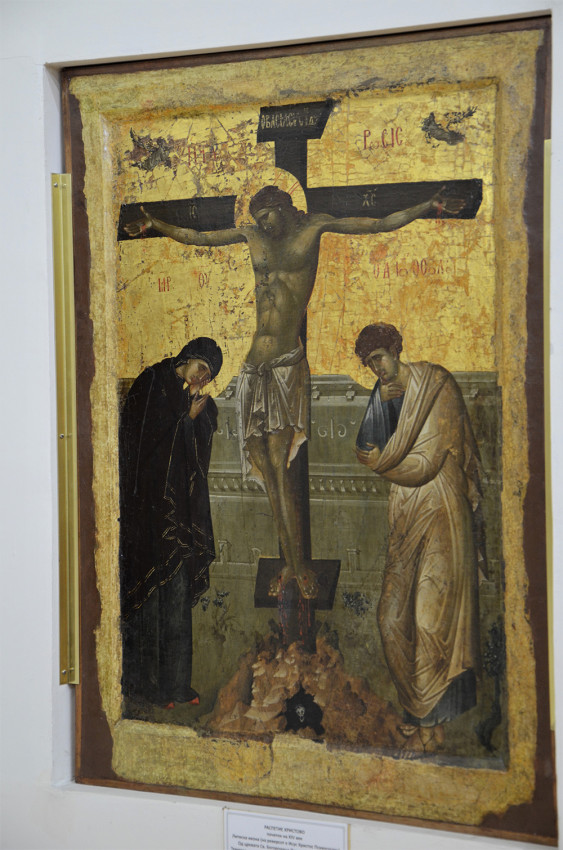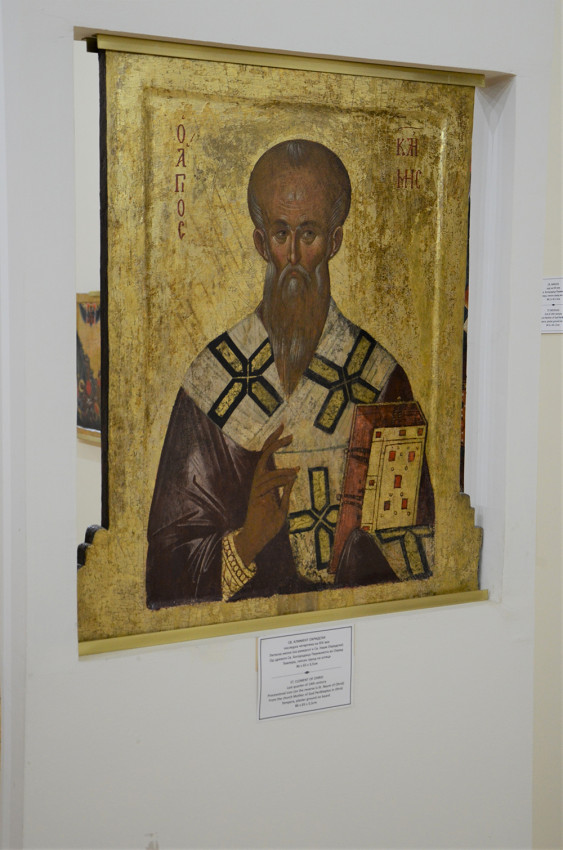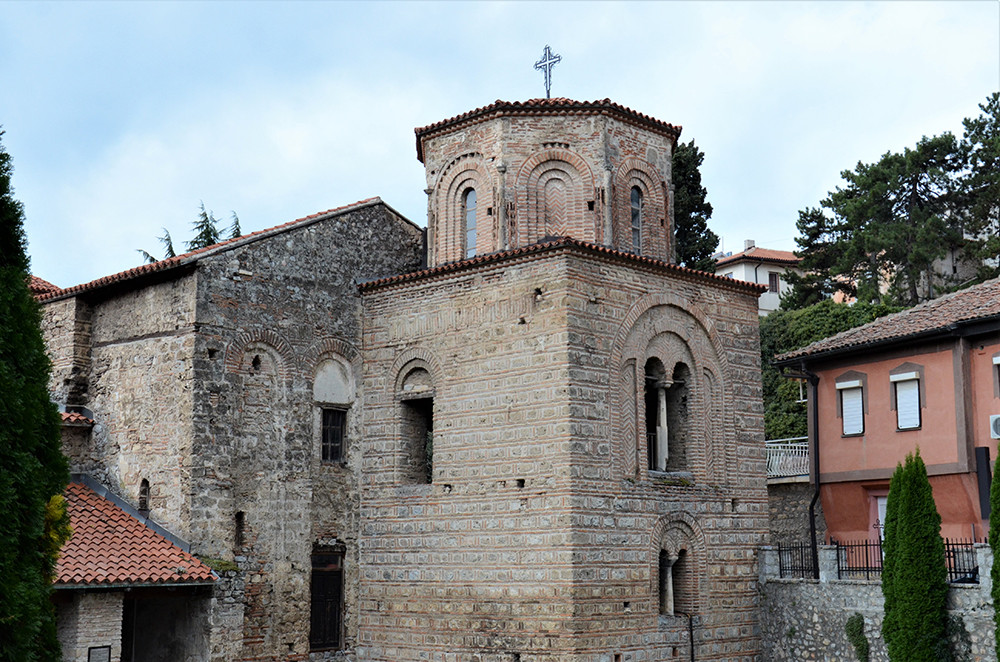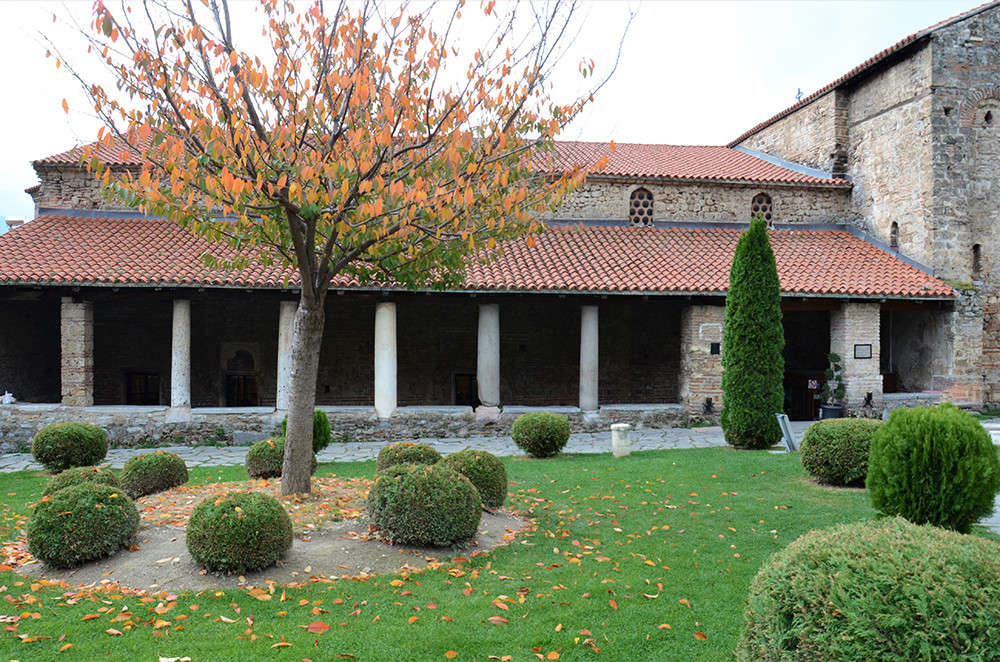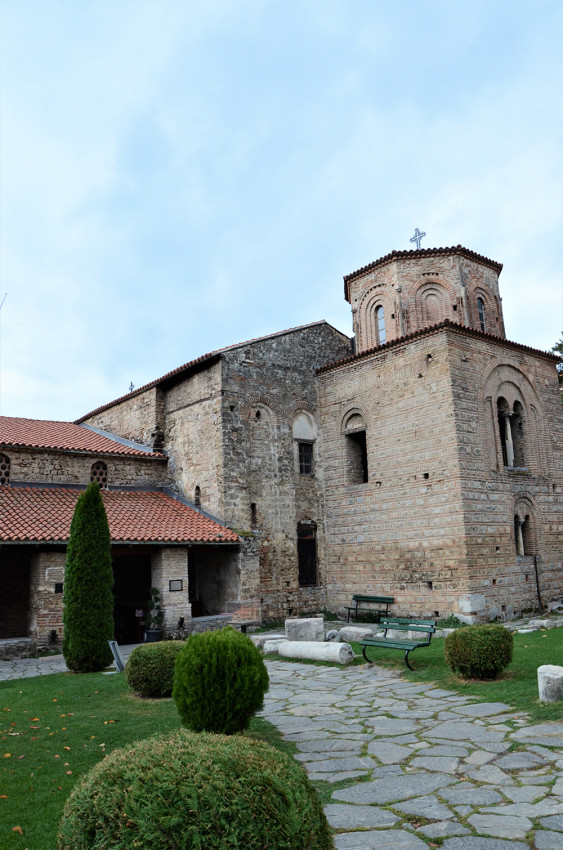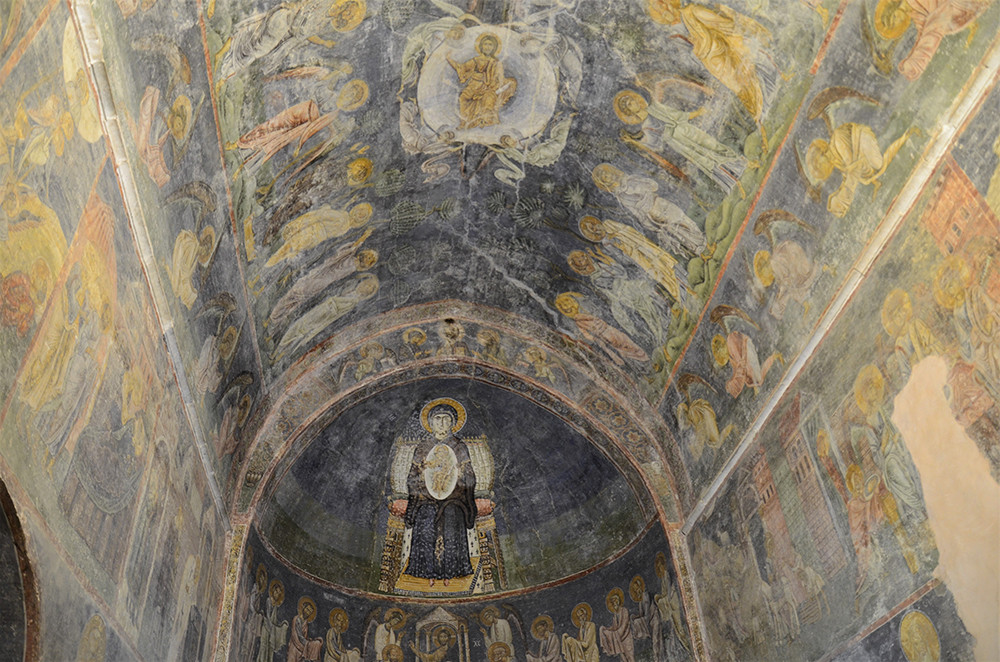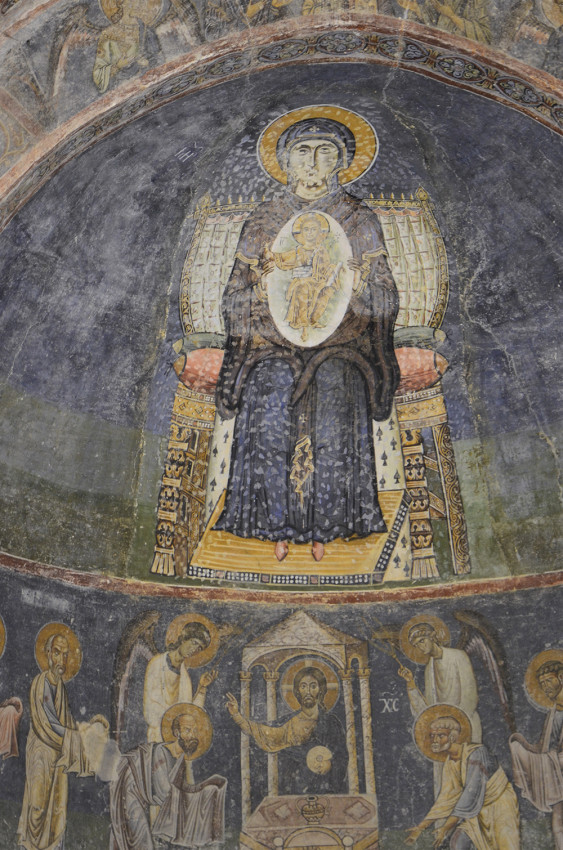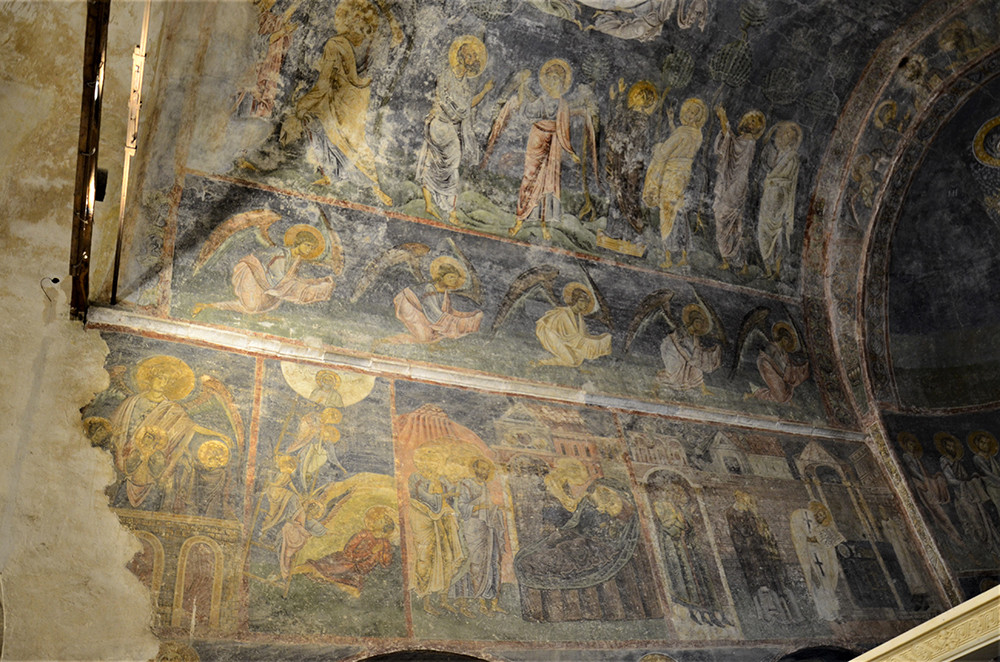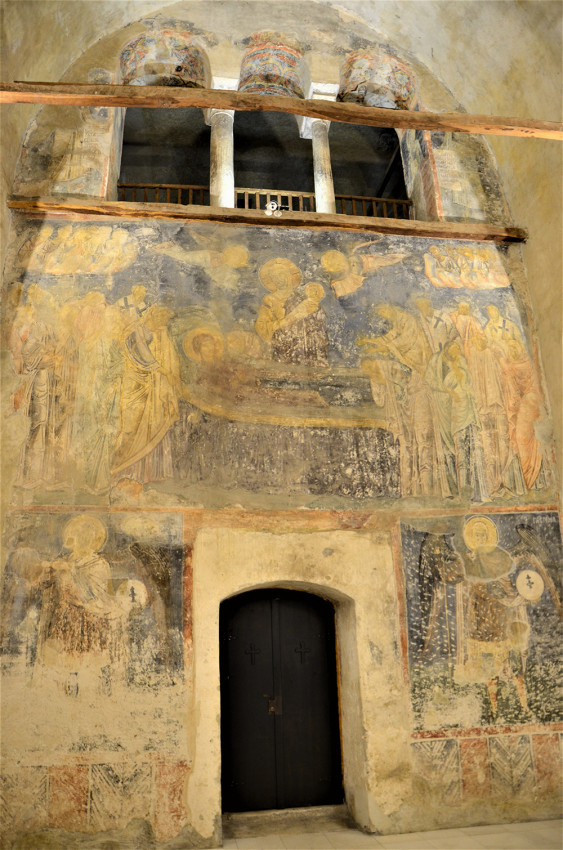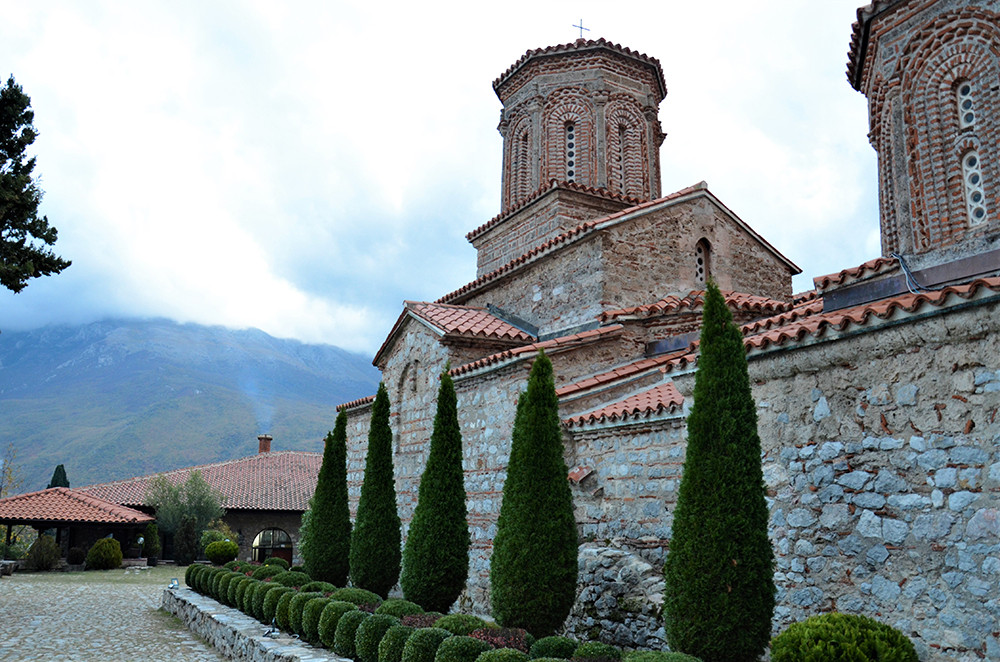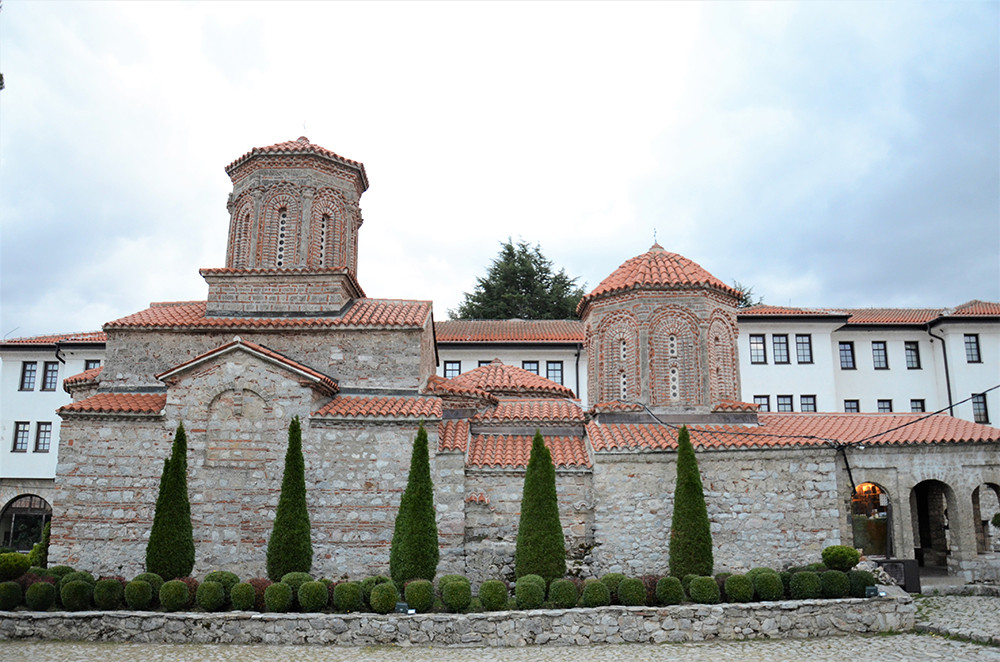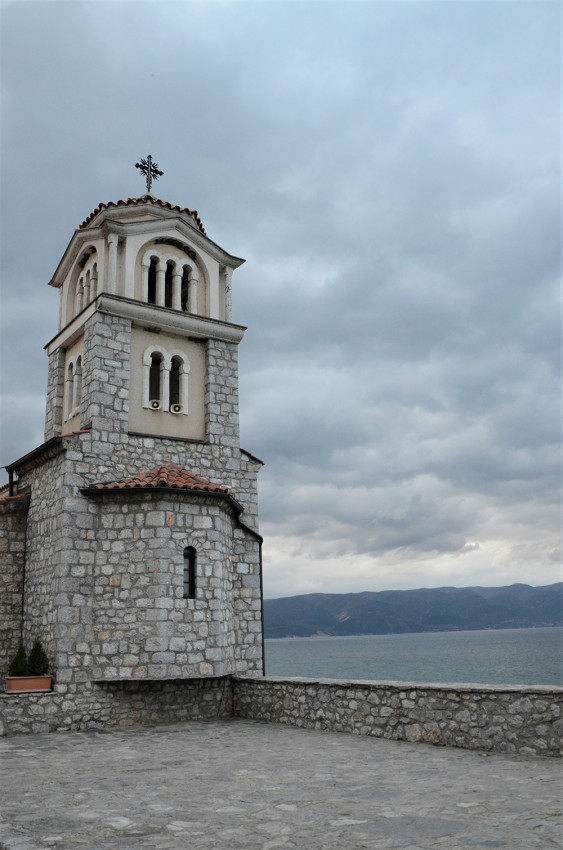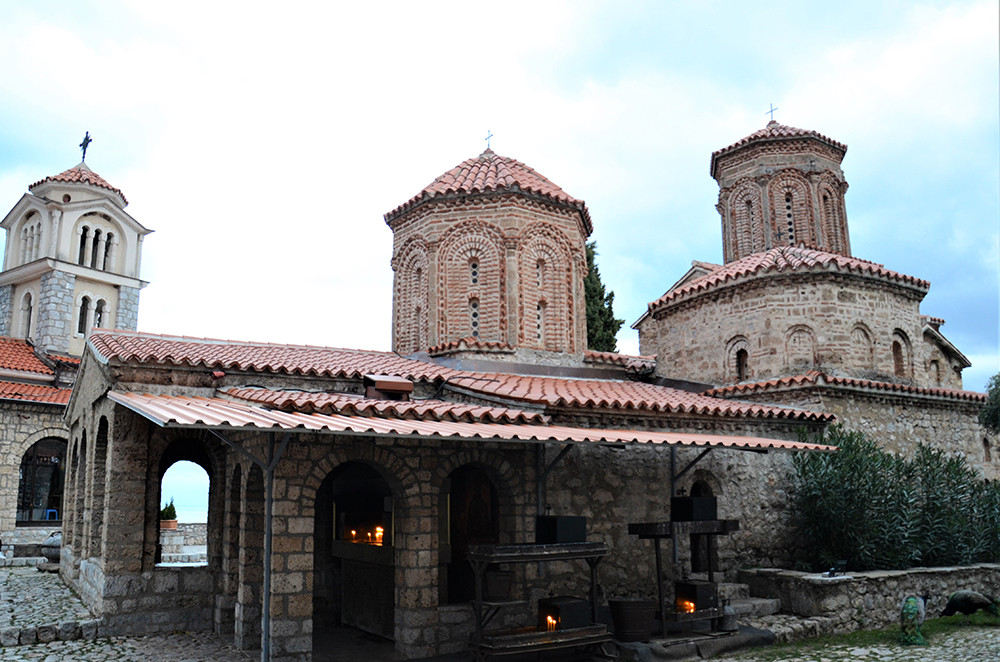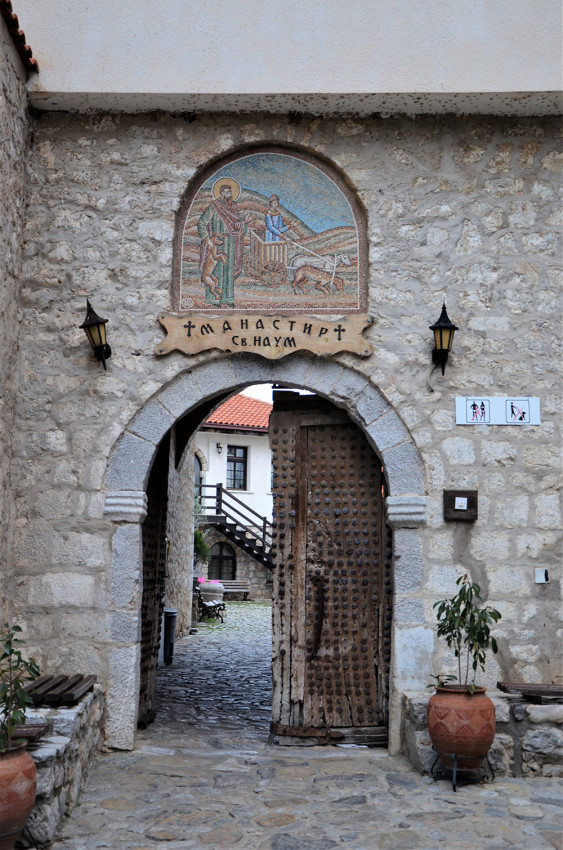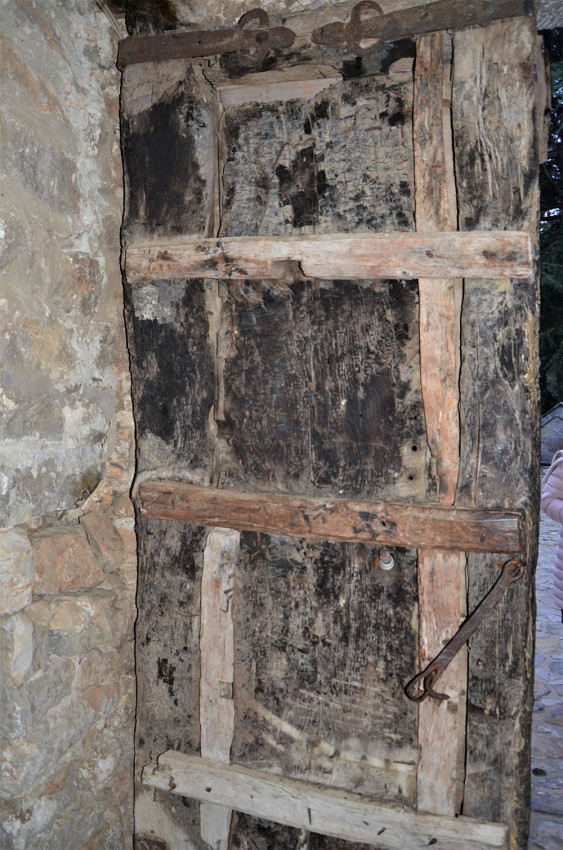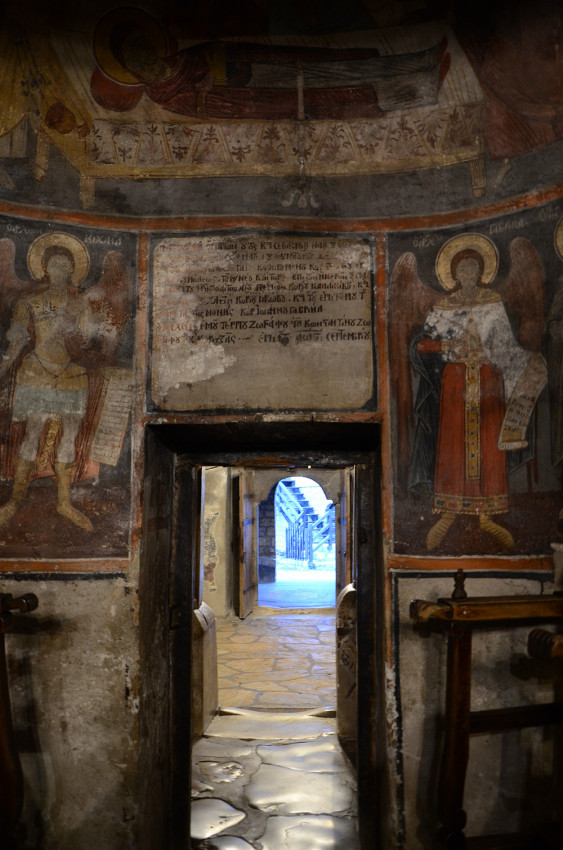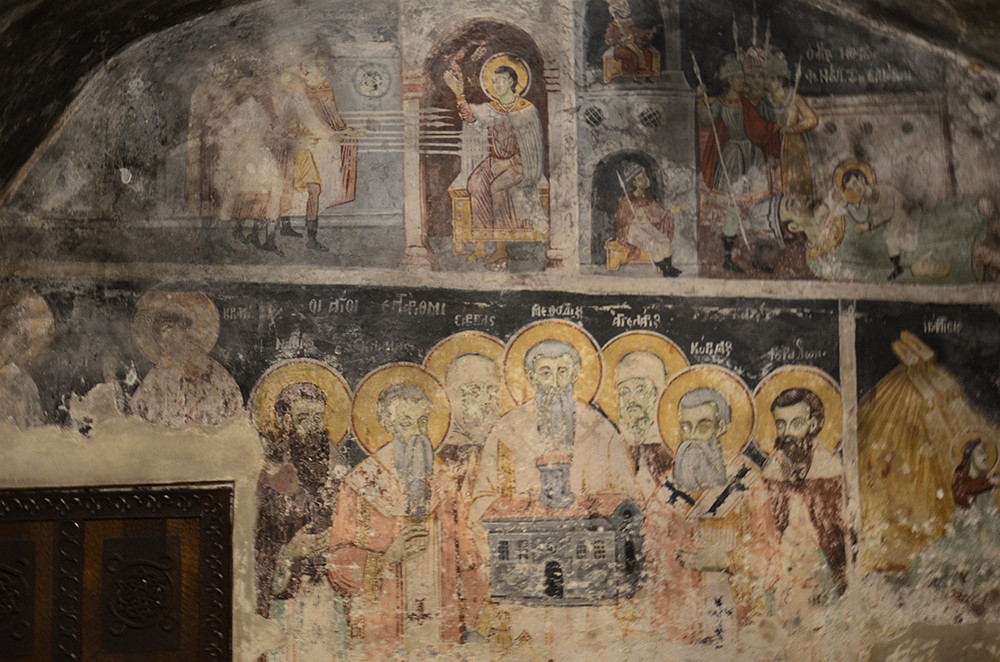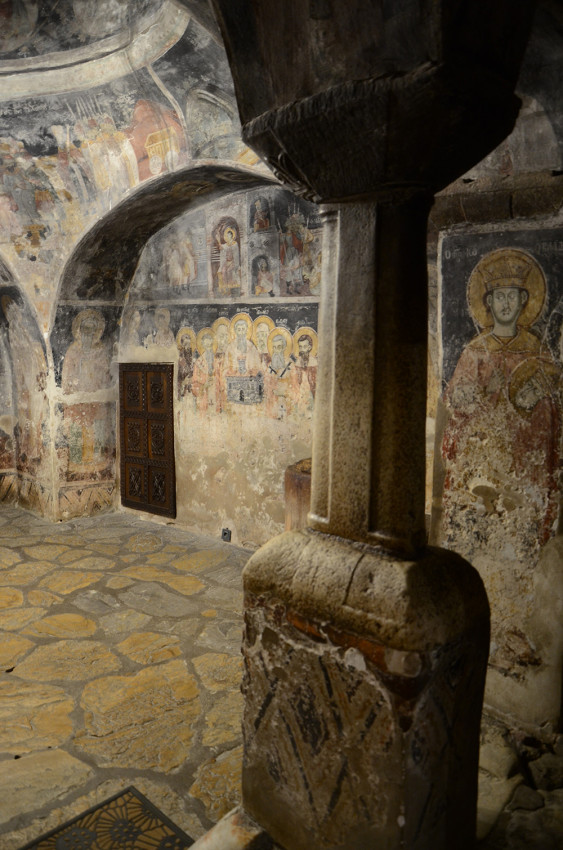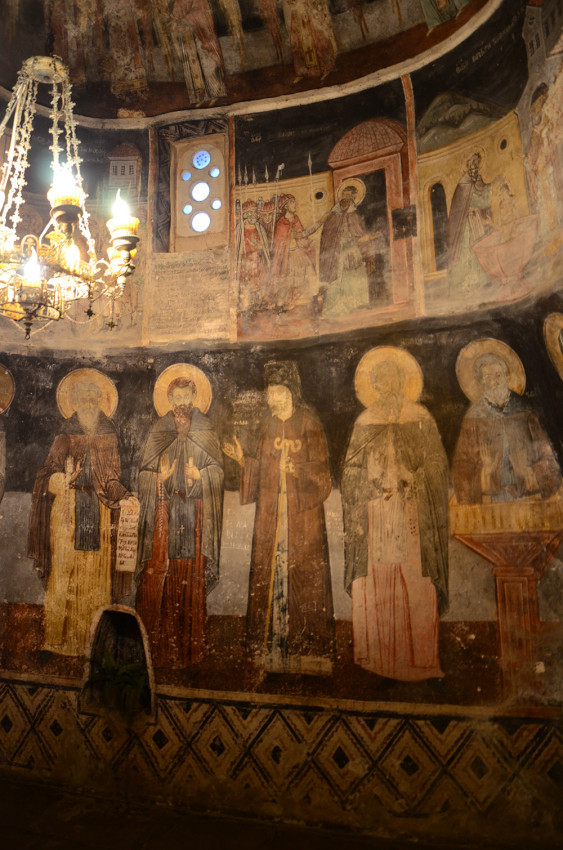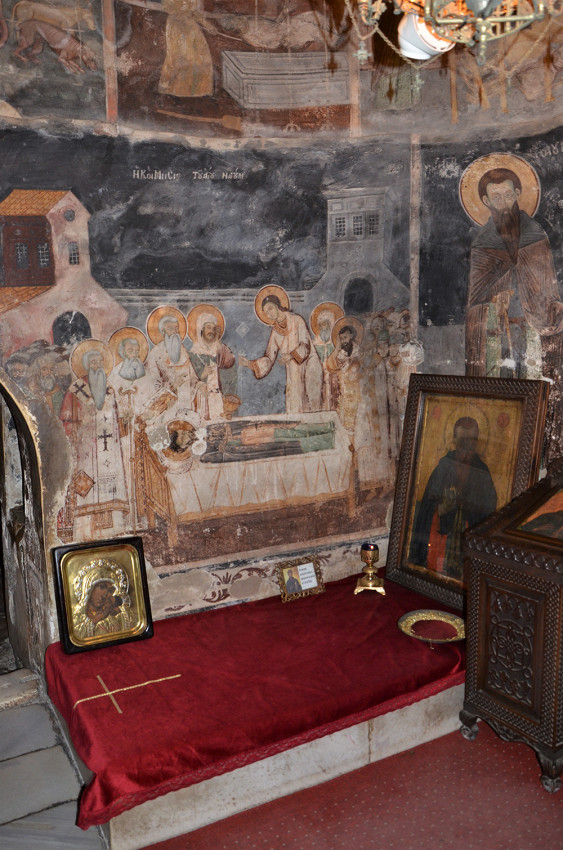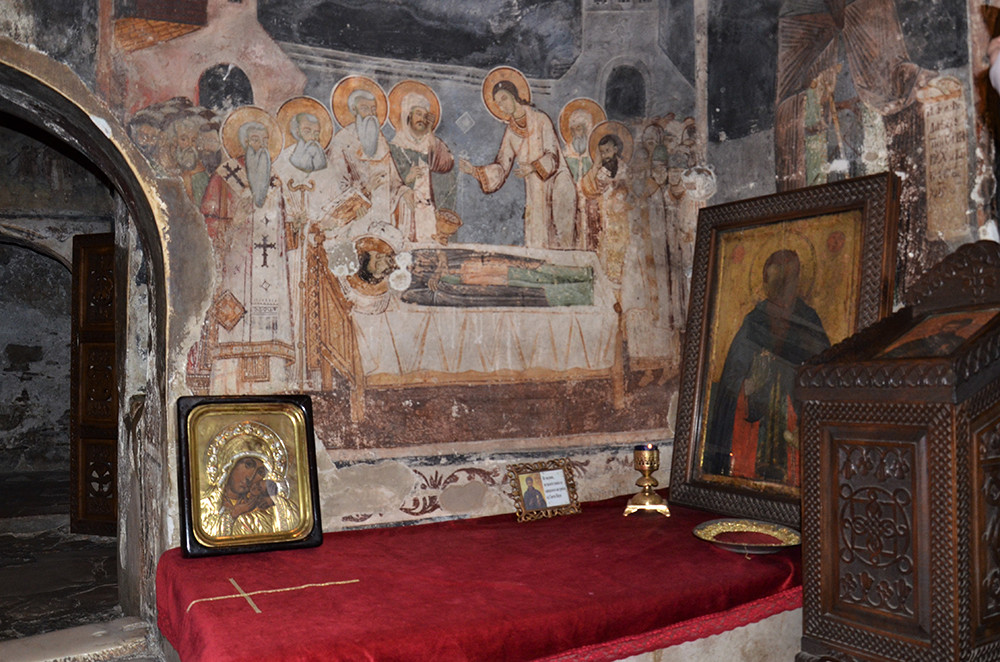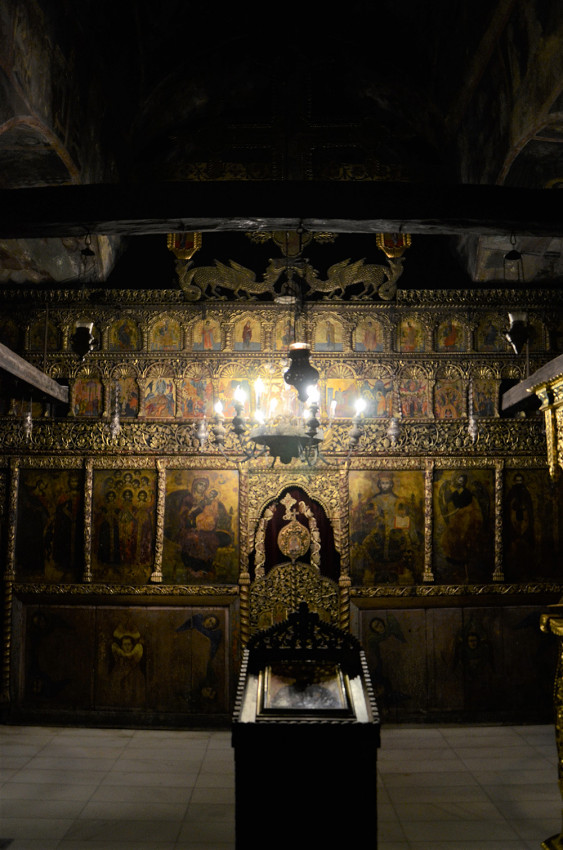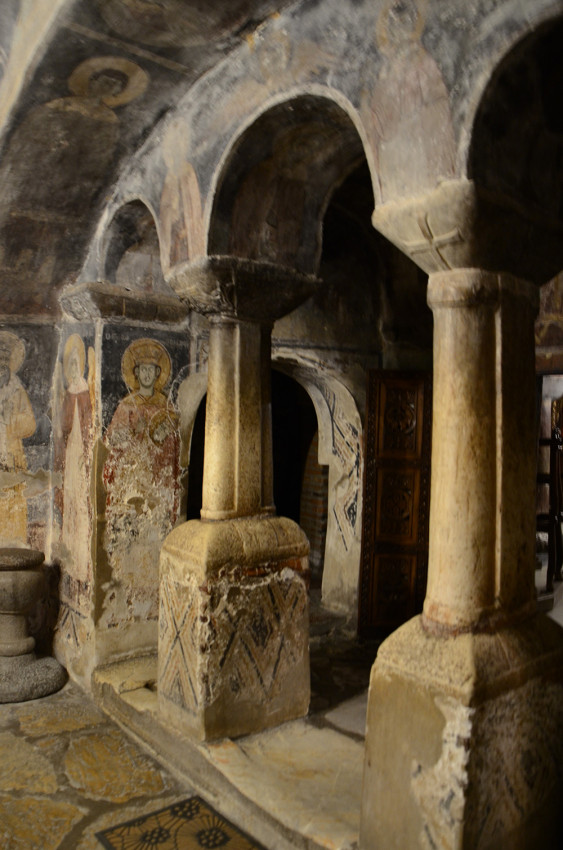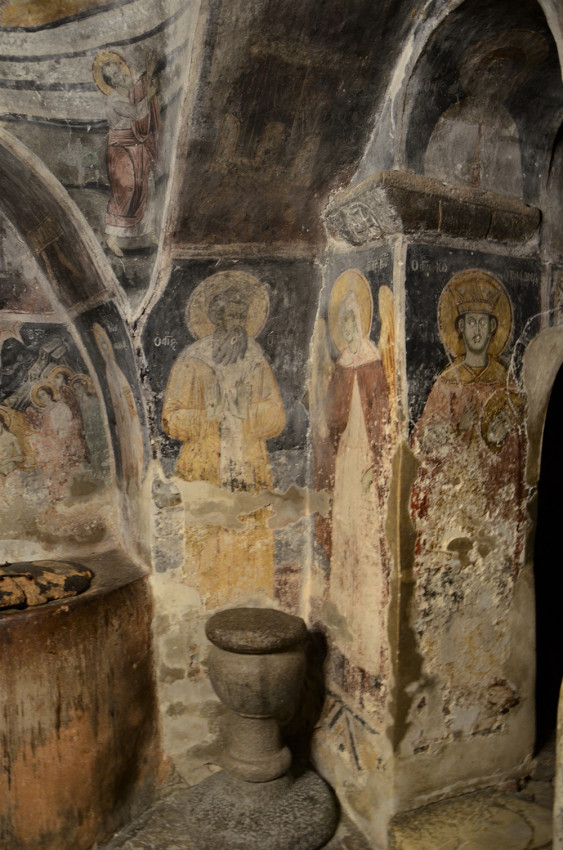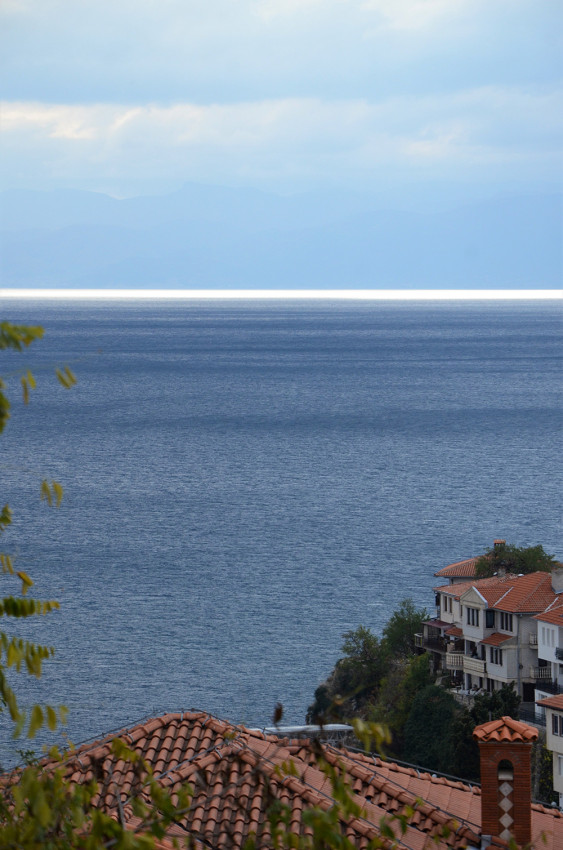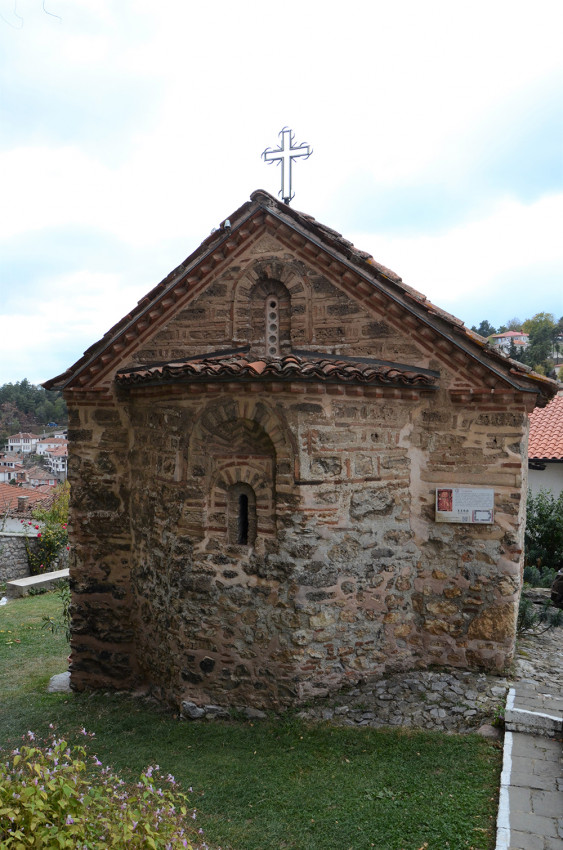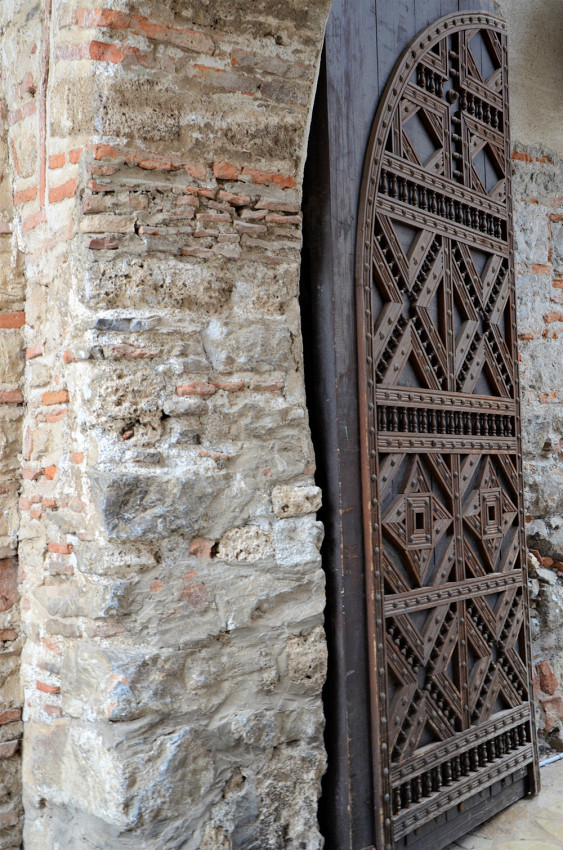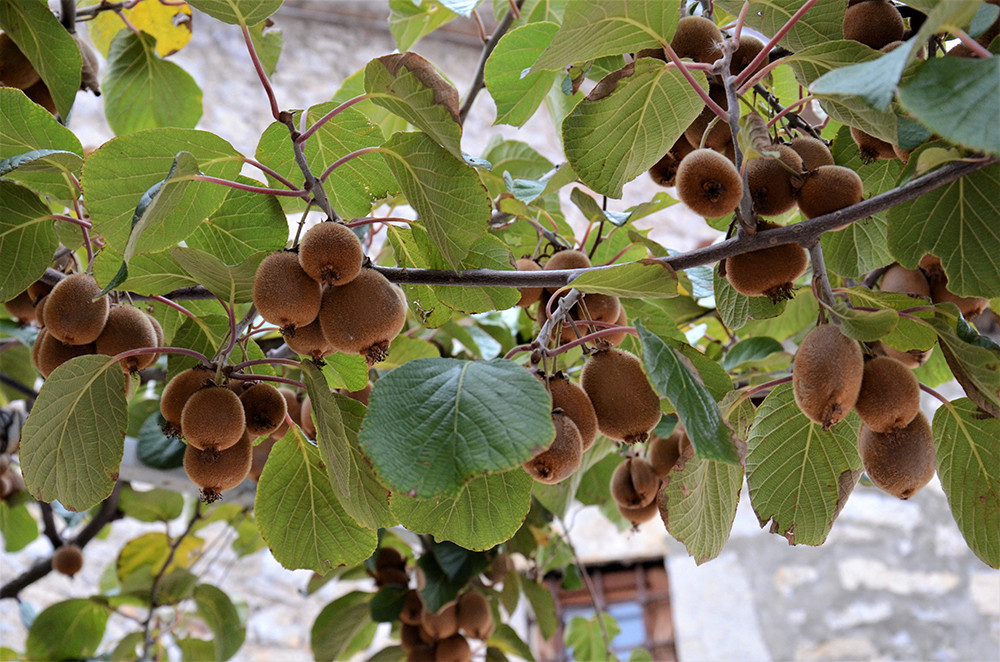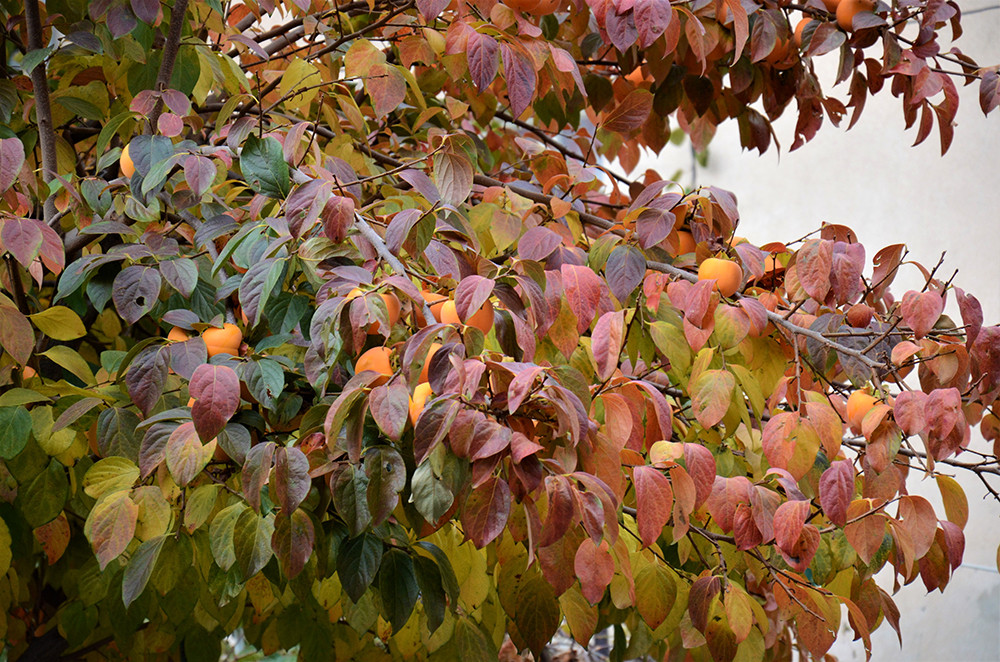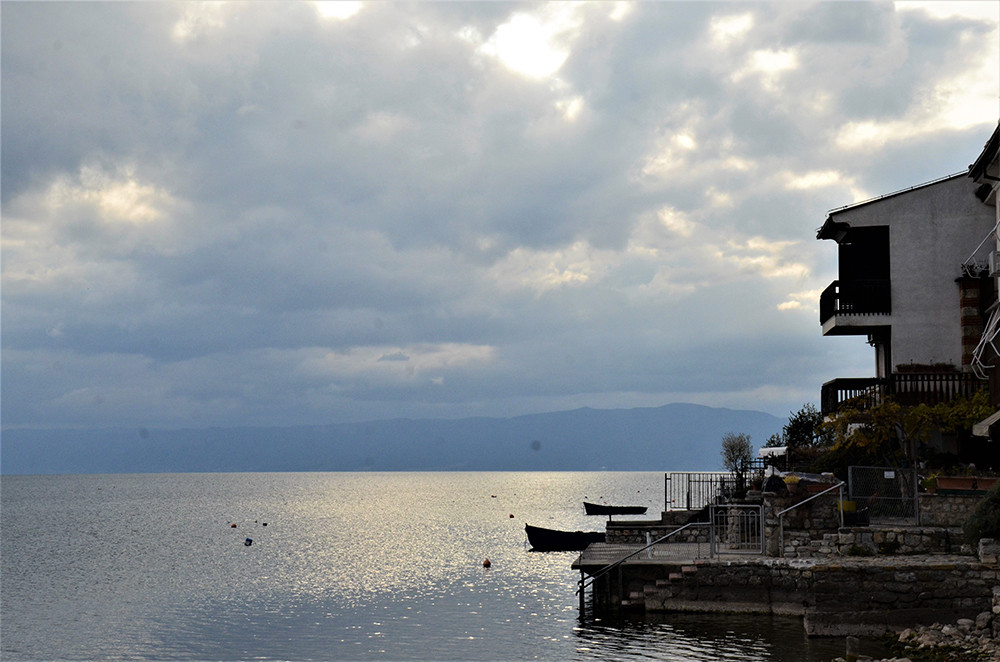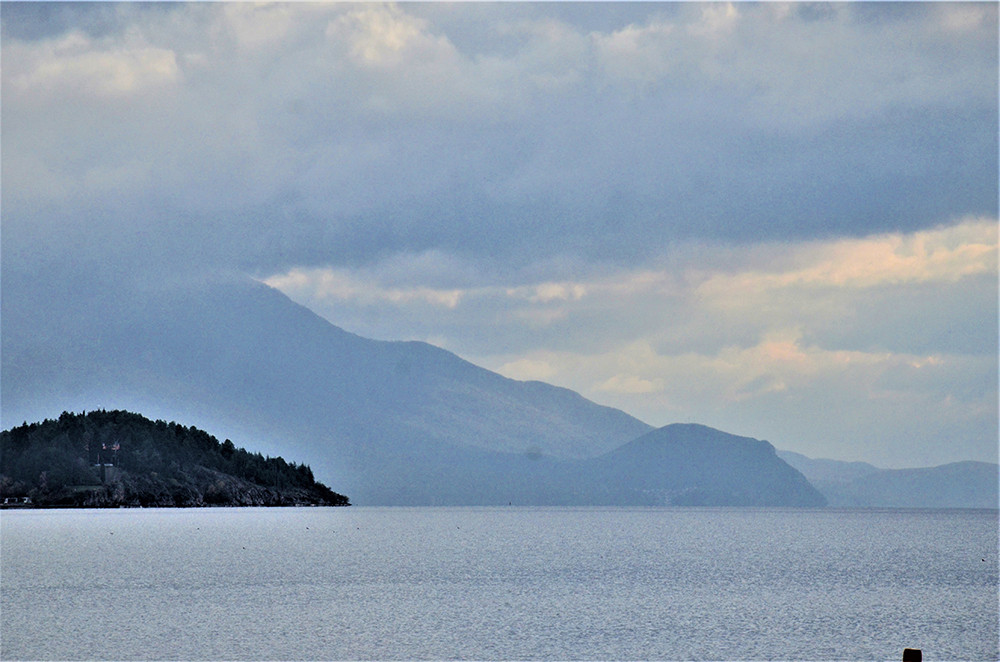Today’s Ohrid is a city of the small Balkan state of North Macedonia, on the eastern shore of the picturesque, mountain-framed Lake Ohrid. Despite the vicissitudes of historical fate, belonging at different times to different states, having known several centuries of Ottoman slavery and decades of the atheistic system, Ohrid has preserved many monuments of antiquity. It’s called the Balkan Jerusalem due to the great significance of its spiritual, historical, and cultural heritage especially precious for Orthodox Slavs.
According to the Lives that have come down to us, open persecution against the Slavic Liturgy and writing began in Great Moravia after the death of Archbishop Methodius in 886. The disciples of the holy Equal-to-the-Apostles brothers Cyril and Methodius—Sts. Clement, Naum, and others, fled persecution and found refuge in Bulgaria (where Ohrid was then located), where they were joyously received by Prince Boris, who provided them with the necessary conditions for the holy work of enlightening the Slavic peoples. Thus the providence of God saved and continued the great mission of Christianization and churching of the Slavs by the creation of a Slavic Orthodox Christian culture.
In the last quarter of the ninth to the first third of the tenth century, two Slavic literary and educational centers, or schools—Preslav and Ohrid—developed in Bulgaria. The Ohrid school was founded by the Equal-to-the-Apostles St. Clement. In addition to translations and the compilation and writing of Slavic spiritual works, St. Clement prepared the clergy and taught children and adults to read and write. He was the first bishop who served and preached in a Slavic tongue.
The Monastery of the Great Martyr Panteleimon was built by St. Clement as the center of the Ohrid school on Plaošnik Hill. During the Ottoman yoke, the monastery was destroyed and a mosque was built in its place. The relics of St. Clement were transferred from the Church of St. Panteleimon to the Holy Theotokos Perybleptos Church in Ohrid. The mosque was also eventually destroyed, and in 2002, a new Church of Sts. Panteleimon and Clement was built on this site as an exact copy of the old ninth-century church. The relics of the Equal-to-the-Apostles Clement now rest here, to the right of the altar, in a marble reliquary.
The Holy Theotokos Perybleptos (meaning “Most Glorious” in Greek) Church was consecrated in 1295. It was built thanks to the benefactor Progonos Sgouros, a relative of the Byzantine Emperor Andronikos III Palaiologos. The painting of the church is associated with the names of the masters Michael Astrapas and Eutychios, done in the Palaiologan Renaissance style, which at that time combined ancient Byzantine traditions and new artistic endeavors expressed in the artist’s desire to convey events, actions, words, spiritual movements, in contrast to “icon” images having direct spiritual contact with the worshipers. The frescoes of the Ohrid Perybleptos Church are a monument of Church art of the thirteenth century. The image of Jesus Christ as the Angel of Great Counsel (Is. 9:6) on the fresco of the central arch of the narthex is the first in monumental painting. The church is currently an active church and a museum with a collection of beautiful medieval icons.
Churches dedicated to Hagia Sophia—the Wisdom of God, were erected in all major Orthodox centers—in Constantinople, Thessaloniki, Sofia, Ohrid, Kiev. Scholars attribute the construction of the Church of Hagia Sophia in Ohrid to the late ninth to early eleventh centuries, and its frescoes to the eleventh to fourteenth centuries. In the second half of the fifteenth century, the church was turned into a mosque, and significant changes were made. The dome was demolished, the frescoes were covered with mortar, the old marble altar barrier was removed, and minarets were erected over the northwestern towers. At present, the church and its frescoes have been restored, with the majority of the icons coming down to us in good condition. In the conch of the apse there’s a rare iconographic type, dating back to ancient traditions: The Theotokos, enthroned, holds an oval medallion in front of herself with an image of the Savior Emmanuel giving a blessing. Under the figure of the Mother of God is a frieze with a two-part composition of Holy Communion. The vault of the bema is filled with a multi-figure scene of the Ascension of the Lord. The entire western wall is filled with a monumental composition of the Dormition. Below this fresco are two archangels, and above it—two prophets.
The monastery is located twenty miles from Ohrid, near the border with Albania, on the cliffs of the southern shore of Lake Ohrid. At the end of the ninth century, it was built by St. Naum, the young disciple of Sts. Cyril and Methodius, and dedicated to the holy Archangel Michael. After St. Naum reposed and was canonized, the monastery took his name, and here lie his holy relics.
During the Ottoman yoke, the monastery was destroyed, and only the columns of the tribelon from the original monastery have survived to this day. Archaeological research has shown that the current church was built on the foundation of the original church in the period between the sixteenth and seventeenth centuries. It underwent reconstruction several times and was also significantly expanded. The carved iconostasis dates to 1711, and the iconography to the eighteenth century. The abbot Archimandrite Nektary has undertaken great labors to revive and beautify the monastery in recent years.
Besides the educational activity of the medieval Preslav and Ohrid schools, St. Naum of Ohrid is known for the miracles that occurred and still occur by his prayers to this day, and his special prayerful assistance to those who are mentally ill. It’s known that St. John of Shanghai and San Francisco venerated this saint and would visit the mentally ill with an icon of St. Naum of Ohrid blessed on his relics.
In the small and very cozy Ohrid, besides the many Orthodox churches, you can see part of the ancient amphitheater (late third-early second century BC), and the fortress of Tsar Samuel (Ohrid was the capital of the First Bulgarian Kingdom from 992 to 1018). The city and people are welcoming, and the lake is beautiful even in not-so-friendly weather. The fall colors are not so bright, but in the fall, outside of the tourist and vacation season, the atmosphere of this wonderful, blessed place, so filled with prayer, feels especially nice.

